How To Become an RBT (Step-by-Step)
Learn how to become a registered behavior technician (RBT) in this step-by-step guide.
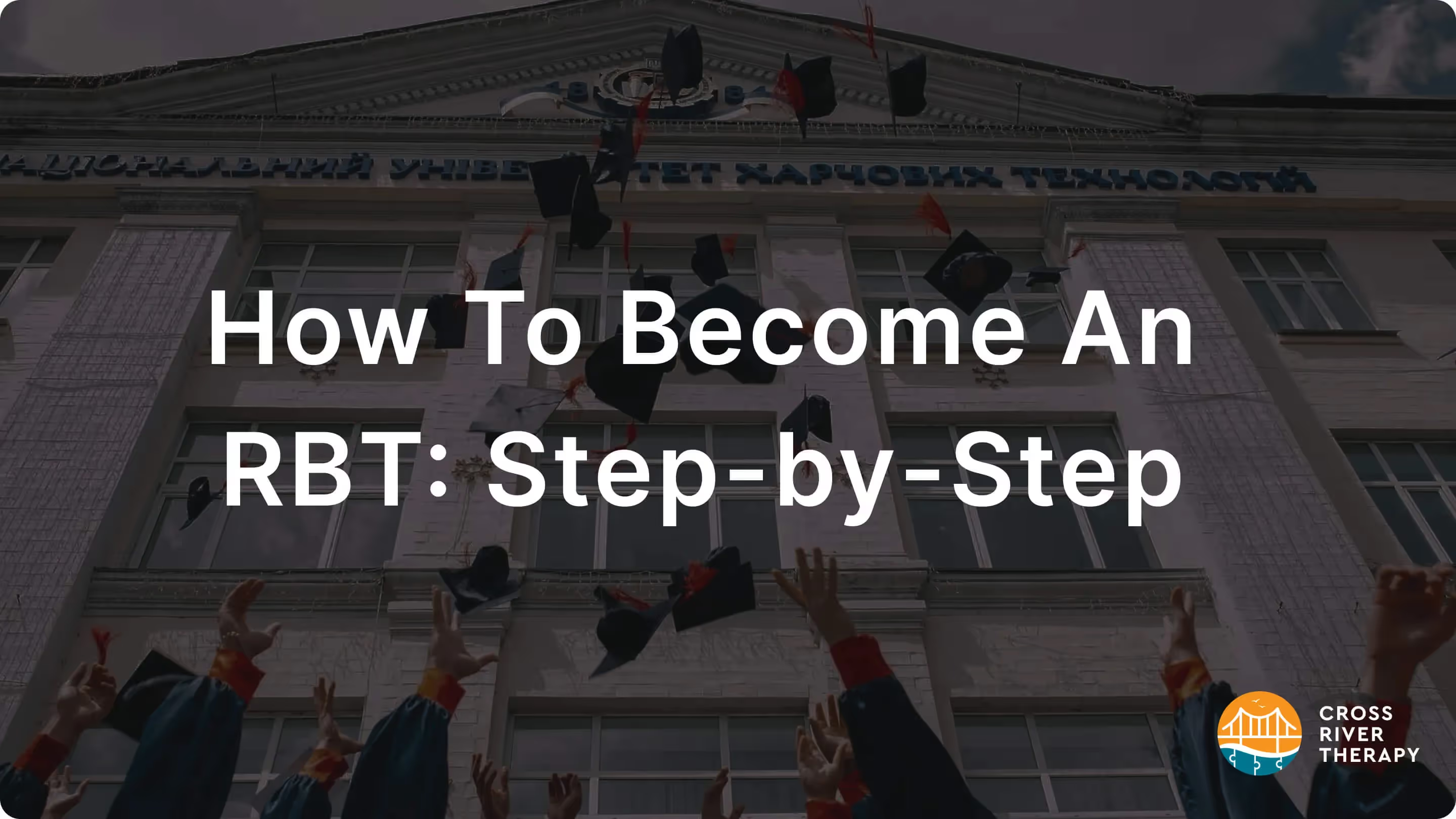
How To Become A Registered Behavior Technician?

1. Complete Your RBT Training Course
This is the first step needed before one can begin to look for RBT employment. ABA therapists are professional workers with lots of responsibilities.
Due to this, many assume that RBT requires a college degree to find a job in the profession.
This simply isn't true. While higher education might be preferred by some ABA employers, RBT certification is attainable through the work and teaching of a BACB that oversees the study of trainees.
More about the 40-hour course
Within the course given to RBT, trainees are required to master it before they are ready for the final exam. The RBT Task List is training consisting of three hours of learning conduct and ethical practices.
How Task List training is taught has few restrictions. Trainees can sit in for lectures, listen to lectures online, or read about most of the material themselves, so long as a BCBA or equivalent oversees their progress.
Task Lists change often, so people looking to take an RBT training course must be mindful to check on the last time updating was done.
Trainees will often get their RBT certification while working on a more advanced job at an ABA clinic. An employee, for instance, may seek to become a behavior analyst.
RBT is seen as the entry point to becoming part of a program that involves further higher education. These are careers, not temporary jobs. Many RBTs and other behavior analysts have degrees or are working on them.
Dealing with costs
As an advantage to aspiring RBTs, the costs of going through training and completing the course, and registering for the certification aren't very expensive.
Some trainees don't pay anything aside from fees. Sometimes, fees aren't explicitly stated to students until communication begins with the organization.
Prices can change from state to state, but students should anticipate paying an affordable price.
2. Pass the RBT Exam
To score a passing grade on the RBT exam, trainees must study these essential topics relating to applied behavior analysis:
- Patient assessment
- Reporting to supervisors and data entry
- Acquisition of skills
- Reduction of behaviors
- Gauging and measurement
- Employee conduct and practice of RBT
3. Maintain Your Supervision Requirements
Since RBT employees are entry-level, supervision by higher-level behavior analysts is commonplace.
Although management of RBTs is done all the time, the minimum is 5 percent of the RBT's schedule spent giving ABA to clients per month. Before the end of the month, the RBT is to have contact with their superior two times in their presence.
Management pays attention to the work being conducted. However, direct contact is allowed over the internet as long as both the RBT and the supervisor can see each other with web cameras.
Alternatively, if supervision this way is impossible, oversight through a videoconference is recommended.One of the days that supervision is done involves an evaluation of a single RBT.
Other than that, oversight can take place within a group.
Both instances are usually easy for the manager and RBTs, though awareness of the performance of certain employees is better with scrutinization done through closer contact.RBTs receive excellent training as they work, thanks to the thorough way that they're supervised.
While RBT training is extremely useful, on-site teaching opens up employees to learning the nuances of the job, something that a 40-hour course might not be able to do.
On-the-job training helps workers master the approaches needed for successful data collection. Helpful to clients, they receive guidance on professional techniques for behavior reduction and advanced capabilities in working on intervention.
When supervisors have great communication with the RBTs under their watch, they show better knowledge of the steps needed for prescribing behavior analysis to children, teens, and adults.
Even if their job doesn't require them to understand all there is to know about ABA, being proficient in these skills comes in handy since most RBTs keep themselves focused on promotions when the opportunity arises.
What’s It Like To Be An RBT?
Registered Behavior Technicians are tasked with helping BCBAs find ways to benefit patients in the treatment of disorders, usually autism. They're also called RBTs.
They may assess groups of patients or individuals on a case-by-case basis.
It's what allows so many people with the disorder to get proper treatment when it's sought out. RBTs are usually supervised by more than one person. The group can consist of an RBT manager or BCBA.RBT positions are typically entry-level.
They serve as the starting point for people working on a career in the field of ABA. Certifications and training are needed to apply for a position.
Courses can be paid for out of pocket, partially by a sponsor such as a trainee's current employer, or given at no charge. Whichever direction is taken for training, it must be done by an entity that's accredited by the Behavior Analyst Certification Board. After that, trainees follow up by completing an RBT exam.
The exam is administered online or in person. Leading up to the exam and immediately after, things move quickly for applicants since the grade is shown directly after the test is finalized.
From there, certification is granted after an approximate seven-day waiting period.
After the exam is taken
Post-exam, applicants can begin their search for a job working as an RBT. Care should be taken to keep up with certifications in the process, as they can become void after a while.
Most behavior analysis jobs have a rotating timeline of recertification that happens every year. It's done to keep workers knowledgeable about the job that they do and to update them on any crucial additions that must be learned.The main objective of an RBT is to benefit clients diagnosed with ASD.
They may also work with patients suffering from other disorders which are closely related to autism.
Teaching is done for clients to improve their communicative and social skills.
Maladaptive behaviors such as avoidance and repetitiveness are identified to make fewer instances of them occurring in patients. RBTs essentially allow autistic people to take in knowledge better, especially as it relates to their past, current, and future behavior.
They differ from BCBAs, whose focus is to build profiles of patients. BCBAs also work with clients as counselors, which RBTs generally aren't assigned to do.
Their responsibility lies in carrying out solutions as specified in their training in ABA therapy. They report directly to BCBAs and regularly follow up with them concerning the work they perform.Another duty that's assigned to RBT through BCBAs is data collection.
They study and analyze changing behaviors in clients, reporting on different responses when stimulated.
The data is given to BCBAs so that they may make better counseling decisions regarding the patient's therapy, how long it'll take, and the implementation of courses that'll serve their best interest.
Since RBTs work hands-on with BCBAs, they often become part of the developmental duties concerning patients' routine behaviors. The items used in training the patients are recommended to BCBAs by RBTs. Some interventions necessitate using more than one therapist for a patient, particularly when severe symptoms are exhibited.
Requirements for Becoming a Behavior Technician
It's impossible to become an RBT overnight. Education on ABA is the basis for everything they learn. When teaching that’s done before, during, and after the first certification is factored in, RBT stands as a job where extensive training is needed. Unless the courses are at a university, the initial training is a relatively speedy process. The basics mandated to begin the course are as follows:
- Age restrictions - Applicants must be over 17. A high school diploma is required, so most seniors on their way to college will have to wait until their last high school semester is over.
- A look into the trainee's background - The background check that’s done can vary in what’s looked at, but most are identical to the vetting done with recruiters. A look into one’s criminal history, whether there are any outstanding warrants, and a check on credit standing should be expected.
- Knowing the competency of the trainee - Competency assessments can show whether or not the trainee has the capacity to understand and carry out duties during the training and in an employment setting. The competency assessment must be done within 90 days after signing up for the certification.
All of these skills are to be validated to earn an RBT certification.In RBT training, the course is managed by a teacher that's certified as a BACB.
It's suggested that the course be done before the application of the actual RBT certificate. The exam will be easier this way and trainees get more time to study and understand what their responsibilities will be with their hopeful employer.
Many companies that provide ABA therapy will have RBT training of their own or work with other establishments capable of providing it. As for colleges, nothing usually changes with the course.
Trainees must stick with the 40-hour course and take the exam at the end. Many college students opt to take it online, though web and hands-on courses could be selected in most circumstances.
Recent News
Related articles
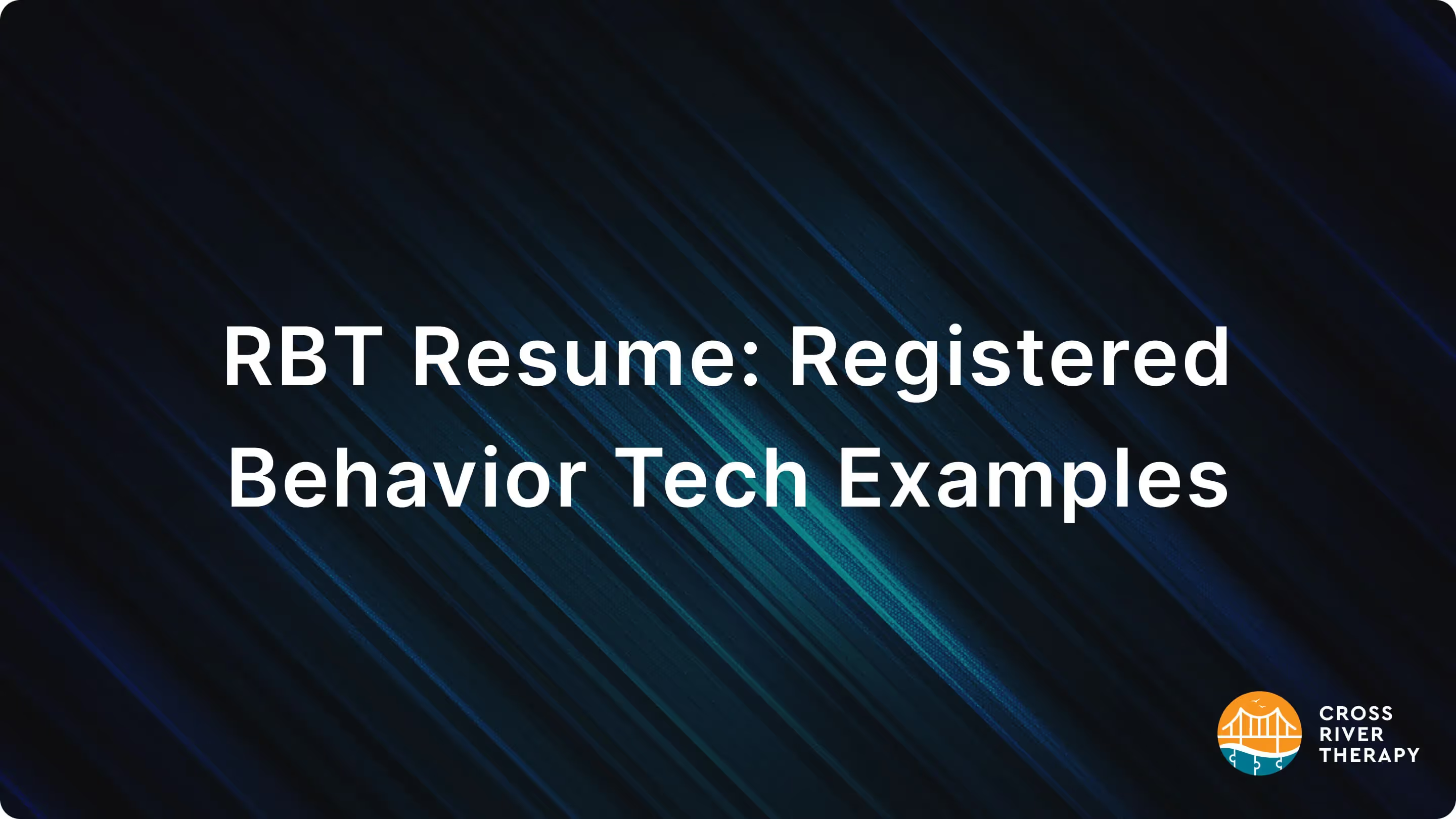
RBT Resume: Registered Behavior Tech Examples
Working with children as an RBT is tough but rewarding. Find out how to write your RBT resume to land your dream job.
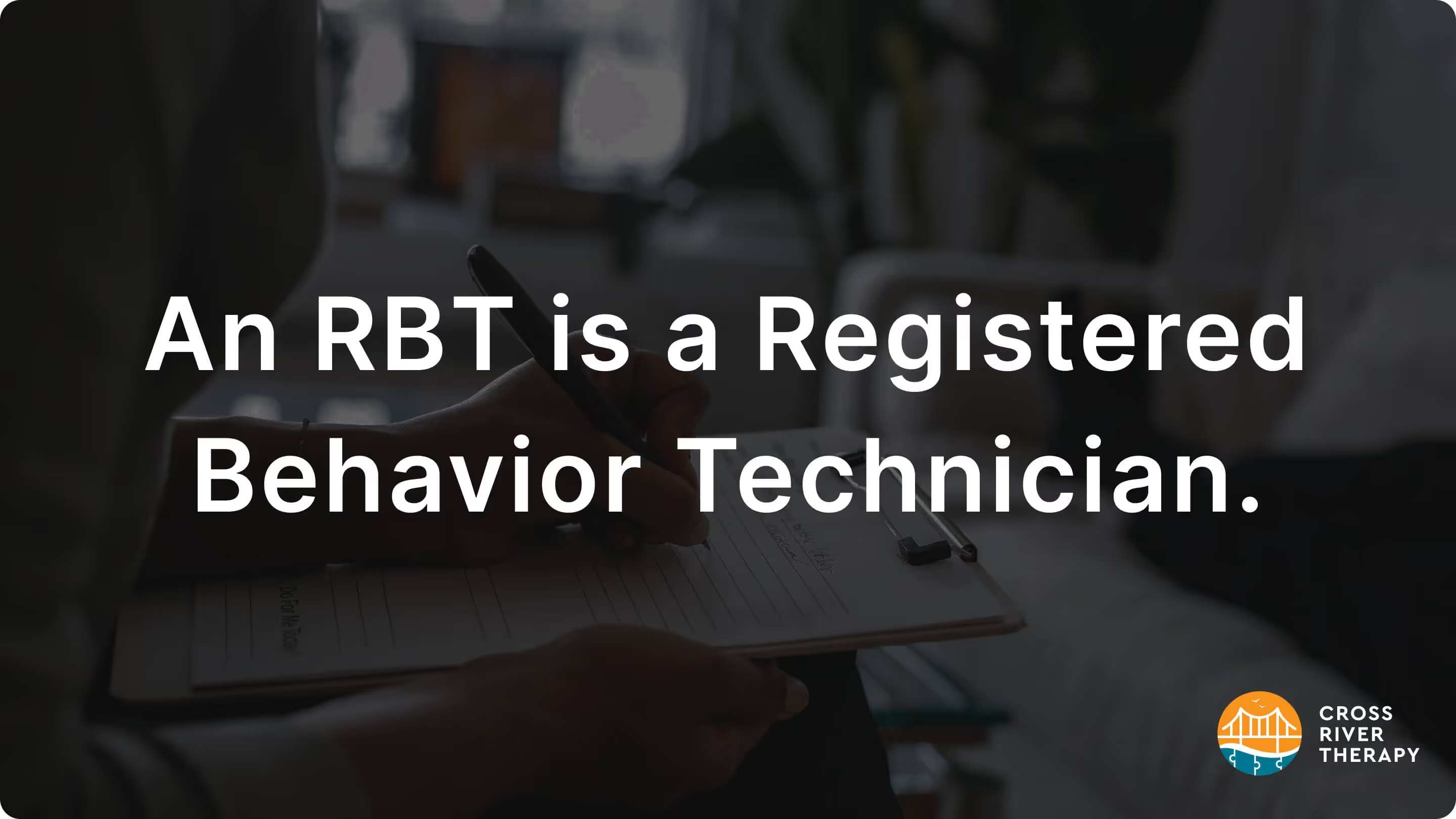
What is an RBT?
Learn what is an RBT, what they do, and more in this guide.
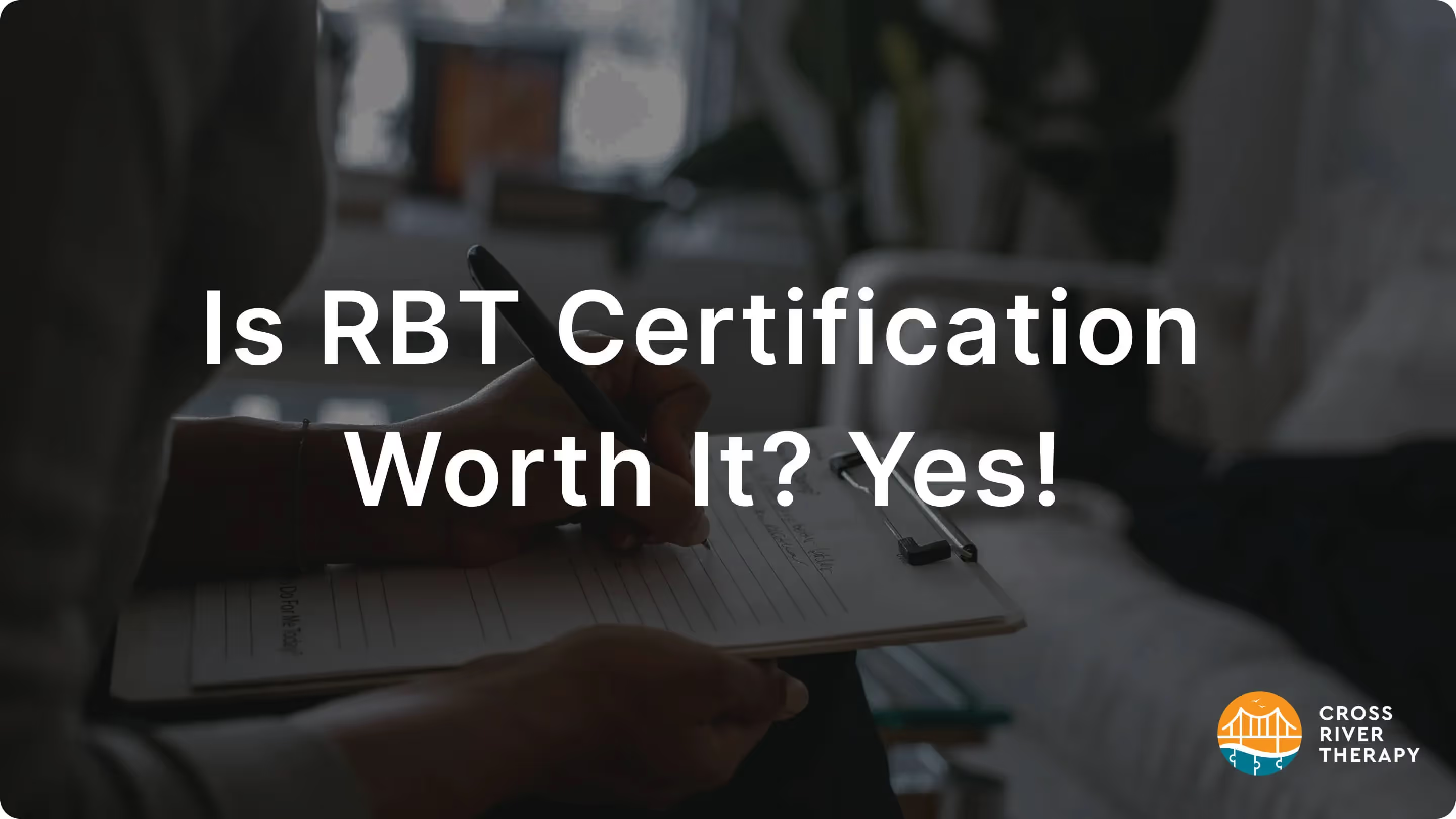
Is RBT Certification Worth It?
Find out if RBT certification is worth it in this guide. Spoiler: it is!

How To Become an RBT (Step-by-Step)
Learn how to become a registered behavior technician (RBT) in this step-by-step guide.
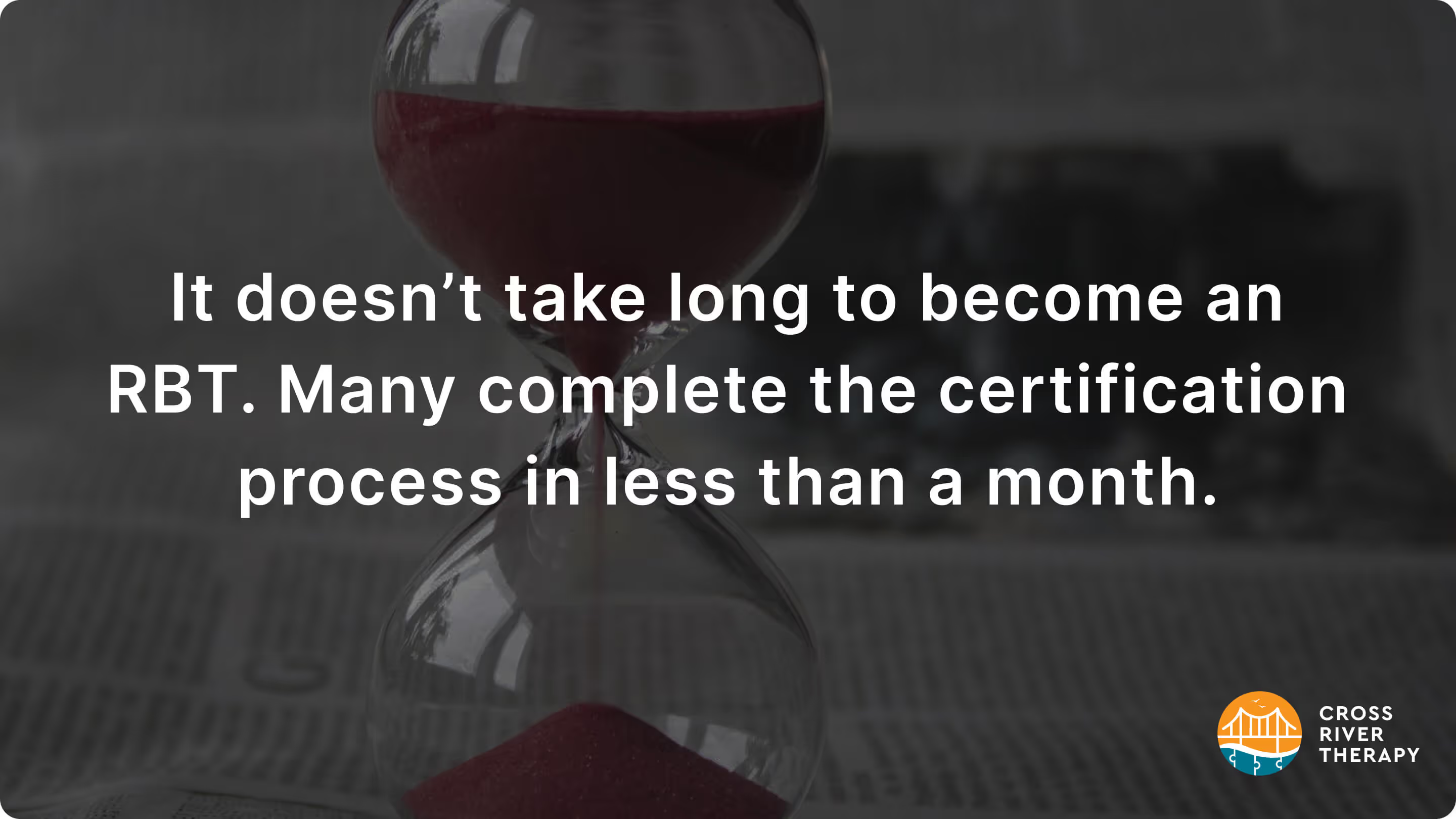
How Long Does It Take To Get RBT Certification?
It doesn’t take long to become an RBT. You're required to complete a 40-hour training course and then pass the RBT exam, which many people can complete in less than a month.

RBT Renewal Application: How To Apply & Prepare
This is a complete guide on the RBT renewal application process. Learn how to apply and prepare today.

Registered Behavior Technician Interview Questions & Answers
Find the most common RBT interview questions + answers to them in this guide.

Find Free RBT Training Near You
RBT training opens up the door for therapists to easily start up their careers in the field of Applied Behavior Analysis.
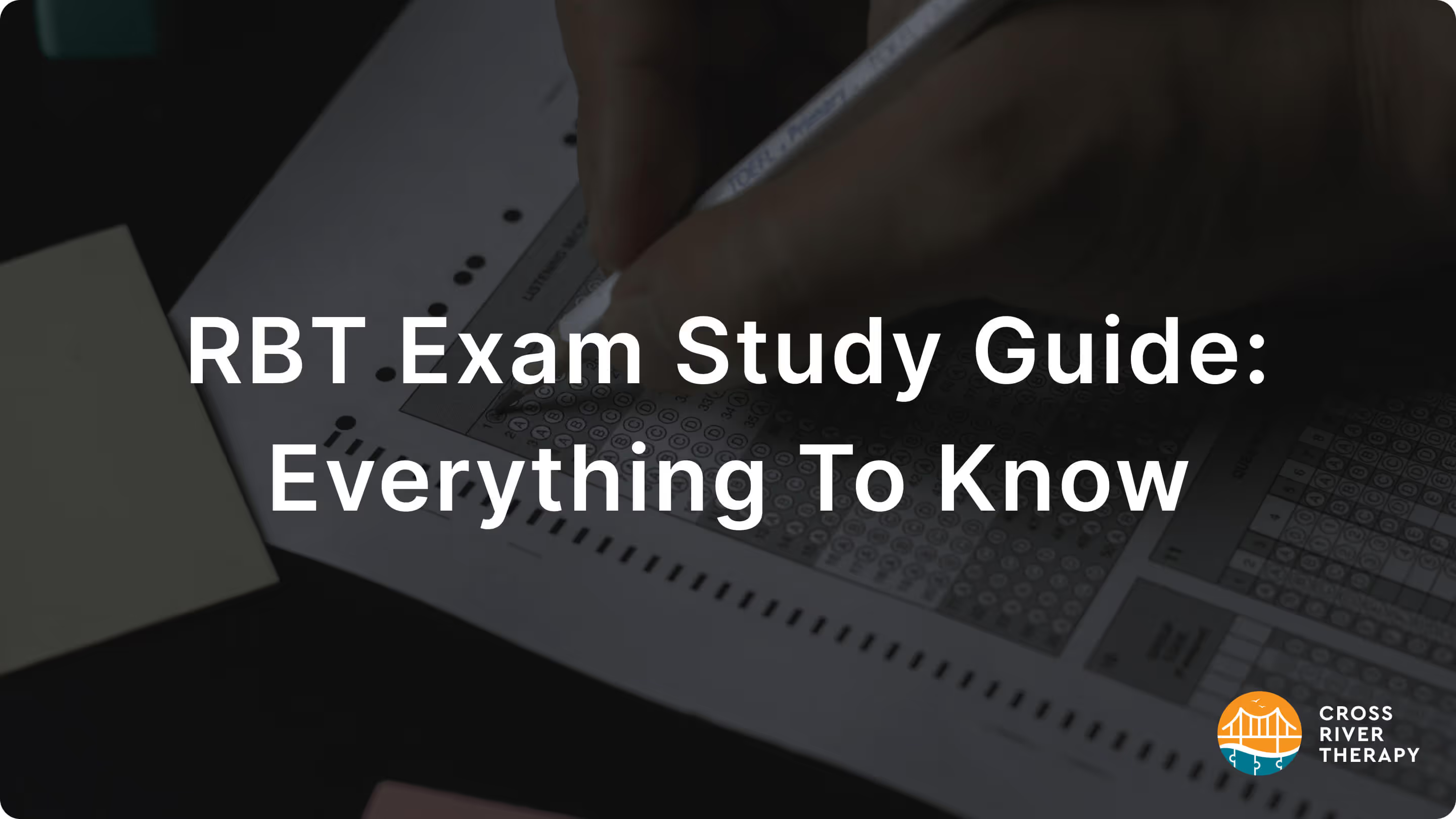
RBT Exam Study Guide: How To Pass
This RBT exam study guide should help you prepare for (and pass) the RBT exam.
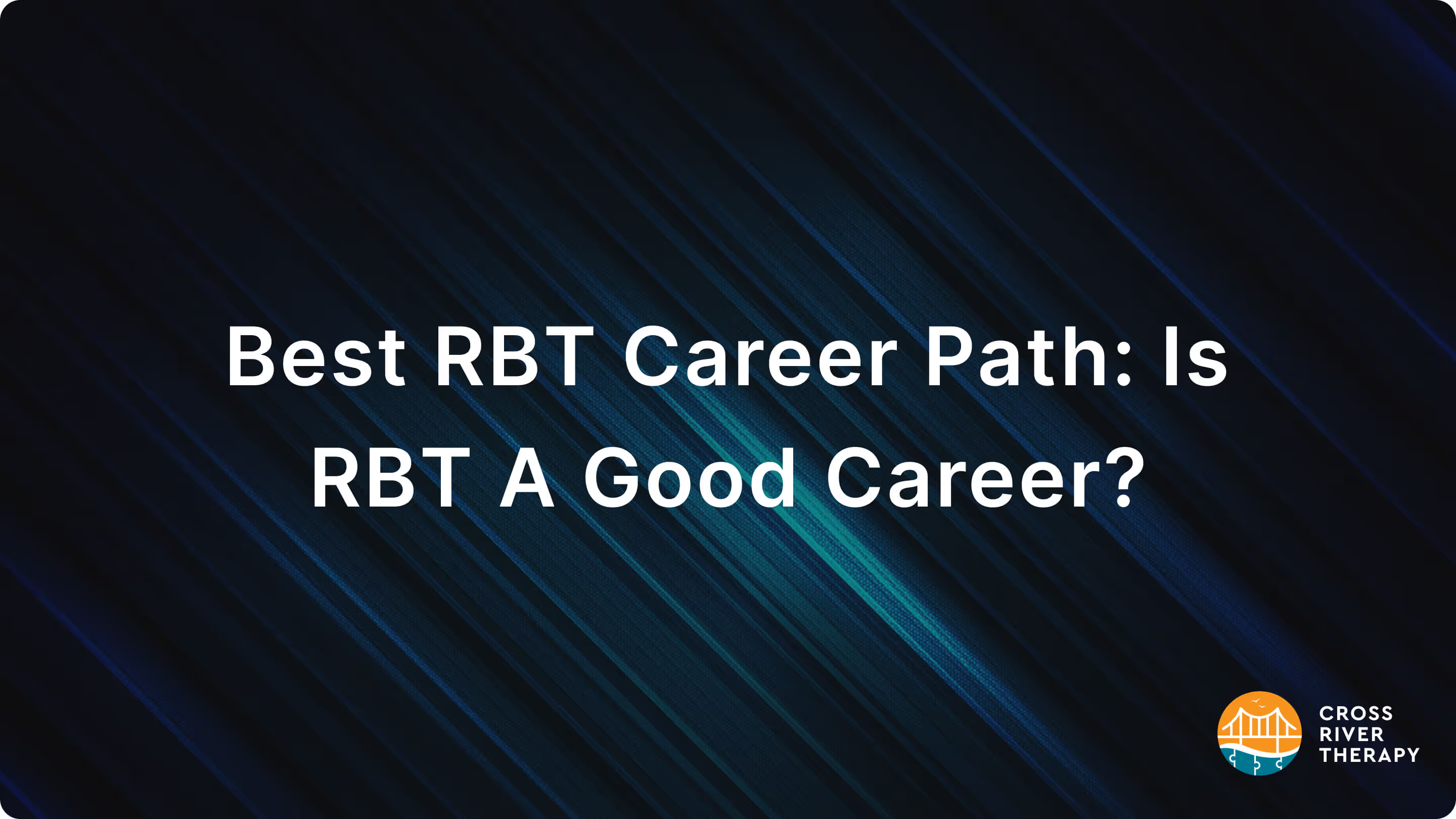
Best RBT Career Path: Is RBT A Good Career?
The best RBT career path is one that pertains to Applied Behavior Analysis.
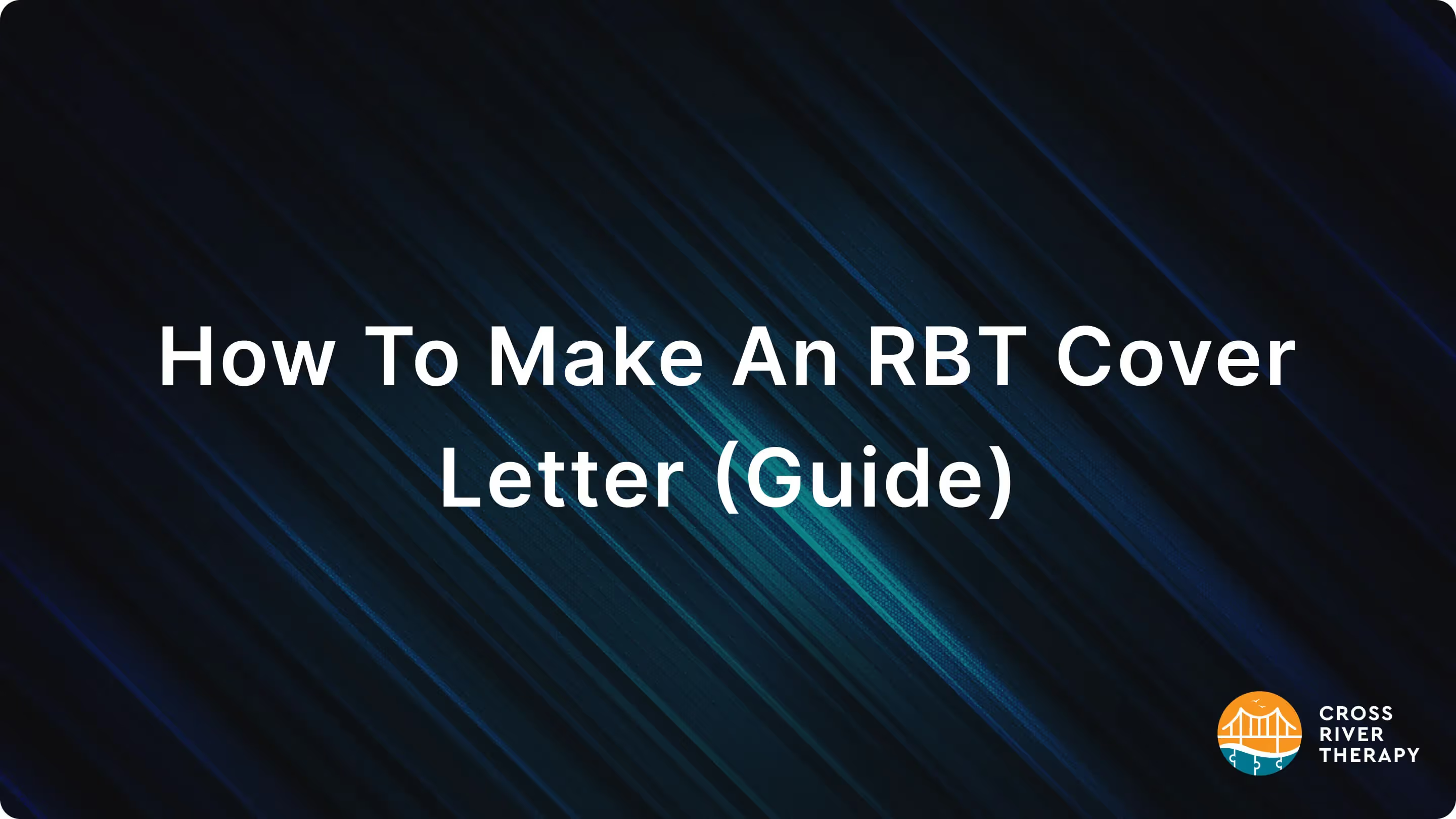
Registered Behavior Technician (RBT) Cover Letter [Guide]
Here is a guide to making an RBT cover letter, and some examples of incredible behavior technician cover letters we’ve seen.
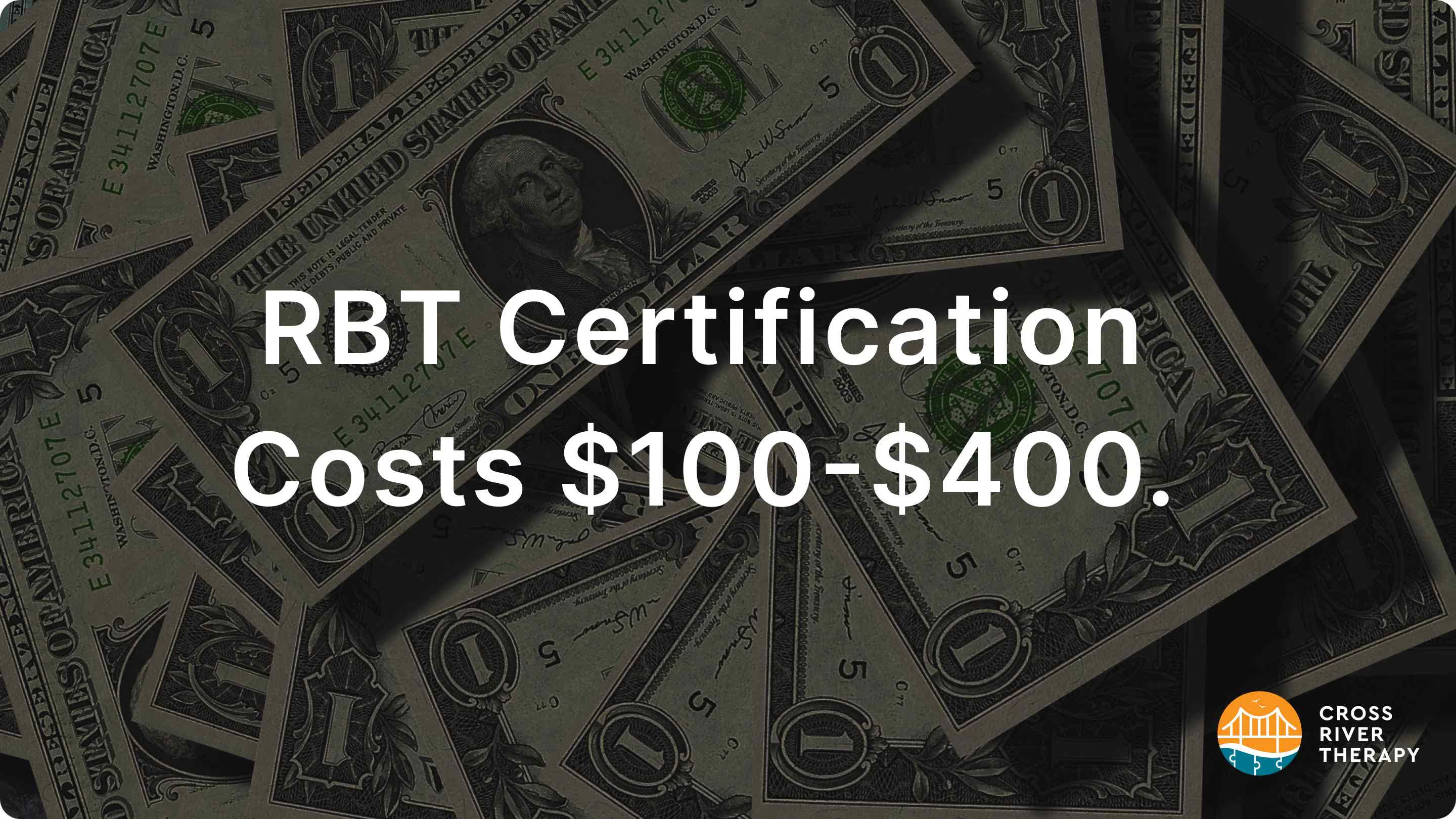
RBT Certification Cost: What To Know
The average cost of RBT certification is between $100 to $400.

